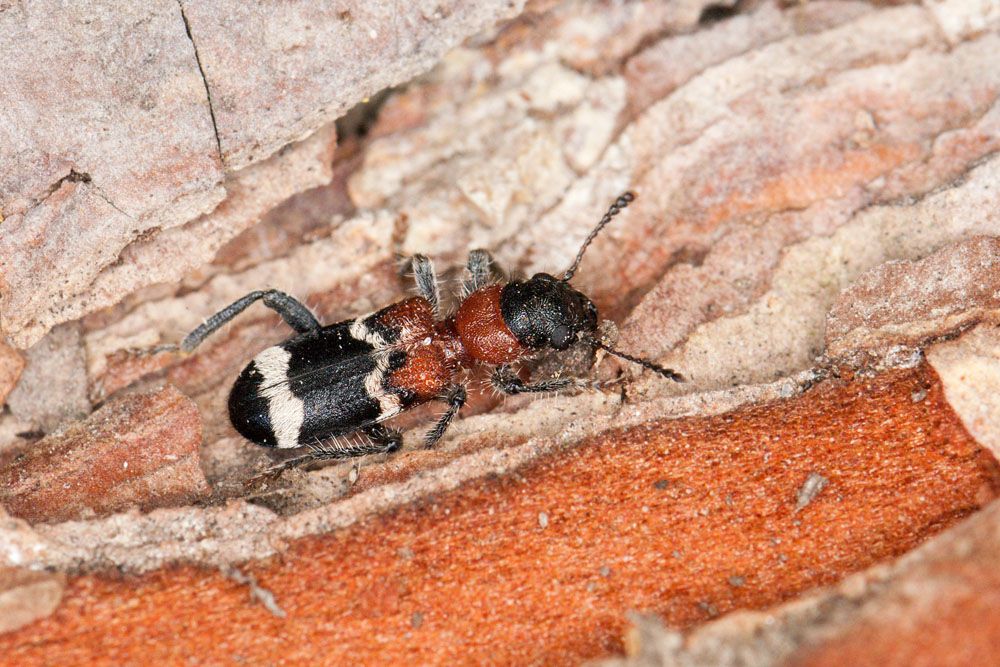
Clerid Beetles – Cleridae
Clerid Beetles
Family: Cleridae (Superfamily: Cleroidea)
Common Name: Checkered Beetles
Appearance: Adult clerid beetles are elongated insects having a narrower head and thorax than the below of the body. They are 5-24mm long and have the body covered with small bristly hairs. They are called “checkered beetles” due to their alternate color pattern. They have a variety of bright colors like red, orange, yellow, or blue with white or black lines.
Host Plants or Food: Bark beetles, Wood borers, Southern pine beetle. Some species are scavengers, and some are pollen feeders.
Territory: About 500 species of checkered beetles are found in North America
Mode of Damage: Beneficial Garden Insect
Habits and Life History:
- Clerid beetles are beneficial insects in controlling the population of pest bark beetles and wood borers.
- Some of the species inhabit trees so found in forests. Some are pollen feeders and are found in a sunny and moist environment containing flowering plants.
- The species that are predators of other insects are found where there is prey.
- The life cycle of the checkered beetles is strongly dependent on the species and ambient temperature ranging from 35 days to 3 years.
- Warmer the temperature, quicker the developmental stages. Cooler the temperature, slower the developmental stages.
- Like other beetles, clerid beetles also have a holometabolous life cycle starting from eggs. One female lay 28-42 eggs at a time.
- The eggs hatch into larvae which feed on wood beetles and turn into pupae by changing their skin. Most of the clerid species overwinter in their larval stage.
- The pupae shed off their skin and develop into adult beetles which feed on adult bark beetles.
